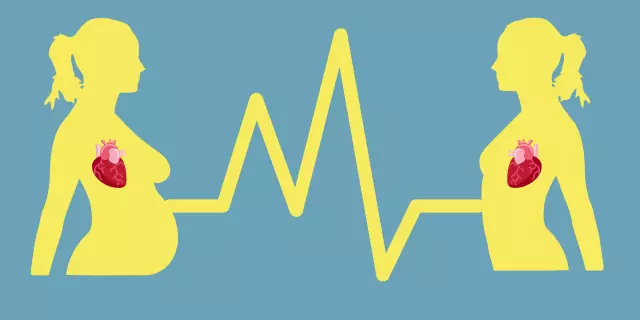- Author Curtis Blomfield [email protected].
- Public 2023-12-16 20:44.
- Last modified 2025-01-23 17:01.
It's worth saying right away that we are not talking about full power accessories (PEP) in the car, but about perinatal encephalopathy, also PEP, in newborns. A severe manifestation of this disease is the syndrome of suppression of the central nervous system, when motor activity is significantly reduced in children (the baby is lethargic, it screams softly and weakly, in severe cases there is no sucking reflex), it is rarely recorded. PEP in a child can usually manifest itself as a syndrome of hyperexcitability: increased irritability of the baby, decreased appetite, frequent regurgitation during feeding, refusal to breastfeed, poor sleep.

Causes of disease
- Chronic ailments of the mother.
- Exacerbation of chronic infections or acute infections in the mother during pregnancy.
- Wrong diet.
- Young mother's age.
- Metabolic and hereditary diseases.
- Pathologies during pregnancy.
- Pathological course of childbirth and birth trauma.
- Unfavorable environmental impact, harmful ecological situation.
- Immaturity and prematurity of the fetus.
How is PEP going?
Proceeding of PEP in newborns has threestage. Everyone has different syndromes. Most often, a combination of several syndromes can be observed.
In the acute period it is:
• hypertension-hydrocephalic syndrome;
• convulsive syndrome;
• acute neuro-reflex excitability syndrome;
• coma syndrome;
• CNS collapse syndrome.
In recovery:
• psychomotor retardation syndrome;
• movement disorder syndrome;
• syndrome of vegetative-visceral disorders;
• hypertension-hydrocephalic syndrome;
• epileptic syndrome;
• Syndrome of increased neuro-reflex excitability.
Outcomes:
• recovery;
• delayed speech, motor or mental development;
• Cerebral Palsy;
• hydrocephalus;
• epilepsy;
• vegetative-visceral dysfunction;
• neurotic reactions;
• attention-deficit hyperactivity disorder.

Patients with severe and moderate brain damage should be treated in a hospital. In case of PEP in a child with mild disorders from the maternity hospital, he is sent under the supervision of a neurologist.
Diagnosis
The diagnosis of "PEP" in a child is made on the basis of clinical data and an analysis of the course of pregnancy and childbirth. Additional research methods are only auxiliary and make it possible to clarify the degree and nature of brain damage.
Treatment
Almost in all syndromes of PEP in a childB vitamins are prescribed, which can be used orally, intramuscularly and in electrophoresis. Basically, in the treatment of PEP, it is possible to confine oneself to an individual regimen, physiotherapeutic methods, physiotherapy exercises, massage, and pedagogical correction. Of the drugs, phytotherapeutic and homeopathic remedies are more often used.

Consequences
By the age of 1 year, most babies have symptoms of PEP, or only minor symptoms remain that do not have a big impact on development. One of the frequent consequences of the transferred encephalopathy is a slight impairment of brain activity, hydrocephalic syndrome. The most severe consequences are epilepsy and cerebral palsy.






